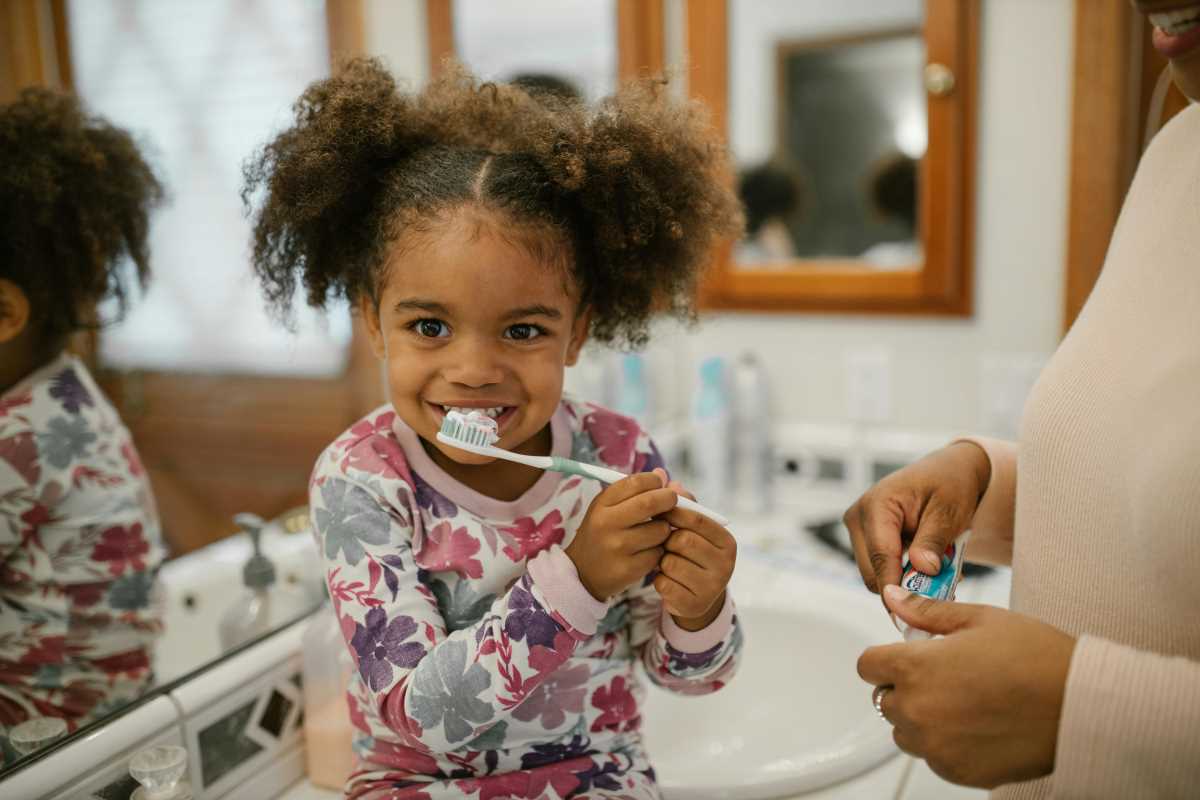Small flashes of a new tooth often light up a child’s smile, creating a joyful milestone for every family. This first sign marks the beginning of an important journey toward strong dental health. Helping children develop good habits from an early age builds a solid foundation for their future. Guiding little hands as they practice brushing, choosing snacks that support healthy teeth, and creating a positive atmosphere around dental checkups all play important roles. Consistent routines and cheerful support can help children feel proud of their smiles, laying the groundwork for a lifetime of confident, healthy grins.
Understanding Your Child’s First Teeth
Teeth don’t arrive all at once. They follow a predictable pattern that lets you track progress and celebrate each milestone. Watch for the lower central incisors first, usually around six months, then the upper incisors around eight to ten months. By age three, most toddlers have a full set of twenty baby teeth.
Use this quick guide to spot emerging teeth:
- 6–10 months: Lower and upper central incisors
- 9–16 months: Lateral incisors at the sides of front teeth
- 13–19 months: Canines (eye teeth) that help tear foods
- 16–33 months: Molars for chewing softer snacks
Gently massage gums with a clean finger or a soft cloth to soothe soreness as new teeth push through. Notice when your child starts biting on toys—that indicates they’re experimenting with chewing motions and building strength for brushing.
Establishing Daily Brushing and Flossing Routines
Kids thrive on consistency. When brushing feels fun, they turn it into a habit instead of a chore. Aim to brush twice a day for two minutes each time. Introduce flossing once teeth touch side by side, typically around age two or three.
Follow these steps to set a clear routine:
- Gather supplies: a small, soft-bristled toothbrush and a rice-size smear of fluoride toothpaste for under two-year-olds; a pea-sized amount for older toddlers.
- Let your child choose a colorful brush or a favorite character on the handle. That sparks excitement and ownership.
- Sing a catchy two-minute song together or use a timer app to make time fly by. Keep the mood light.
- Model the technique: angle the brush at 45 degrees, use gentle circles, and cover front, back and chewing surfaces.
- Introduce flossing with ease by using pre-threaded flossers designed for small hands when two teeth touch.
Reward stickers or a colorful chart keep motivation high. Celebrate each week with a small treat—perhaps extra story time or a trip to the playground—to reinforce positive behavior.
Choosing Tooth-Friendly Foods
What children munch on influences enamel protection and cavity prevention. Instead of sugary sweets, choose snacks that strengthen teeth and support overall health. Many kid-approved options provide both flavor and dental benefits.
- Cheese cubes or string cheese: Rich in calcium and casein, they neutralize acid.
- Crunchy vegetables like carrots and celery: They scrub surfaces and boost saliva.
- Plain yogurt with fresh berries: Provides probiotics and vitamin C without added sugar.
- Apple slices with nut butter: Encourage chewing and offer protein.
- Whole-grain crackers: Less sticky than refined snacks and deliver fiber.
After treats, give water to rinse away leftover sugars. Swap soda or fruit juice for water or milk, which hydrate and keep teeth strong. Small changes in snack choices can lead to significant benefits over time.
Making Dental Visits Positive Experiences
First appointments shape how children see dentist chairs for years to come. Schedule the initial checkup by their first birthday or within six months of the first tooth’s arrival. A friendly environment and calm approach make visits stress-free.
Try these steps to ease nerves:
- Plan a pre-visit tour if the office offers one. Familiar surroundings build confidence.
- Role-play at home: Let your child sit in a chair while you count teeth with a small flashlight.
- Use upbeat language: Call the dental mirror a “tooth explorer” and the air polisher a “bubble blower.”
- Offer praise and high-fives after the appointment. A sticker or small toy can serve as a fun token of bravery.
Regular checkups every six months detect issues early. When children see clean teeth at each visit, they associate dental care with success instead of fear.
Maintaining Motivation and Consistency
As children grow, their routines and interests change. Keep nurturing good habits by updating tools, tackling challenges together and celebrating progress. Involve them in choosing new toothbrush designs or flavors of toothpaste to sustain their interest.
Set short-term goals like “brush two times each day all week.” Keep a chart visible on the bathroom mirror and let them color in each success. Praise progress with enthusiastic comments like “Wow, your brushing looks super smooth today!” Explore creative apps designed for kids that track brushing streaks and award virtual badges.
If setbacks happen, stay flexible. Turn brushing into a game or brush side by side so it feels like a shared activity. Gently remind them why clean teeth lead to bright smiles and confident conversations with friends and family.
Starting dental care early builds a foundation for lifelong healthy smiles. Consistent routines, healthy snacks, and positive visits help your child develop good habits and confidence. Every small step counts in maintaining their dental health.
 (Image via
(Image via





